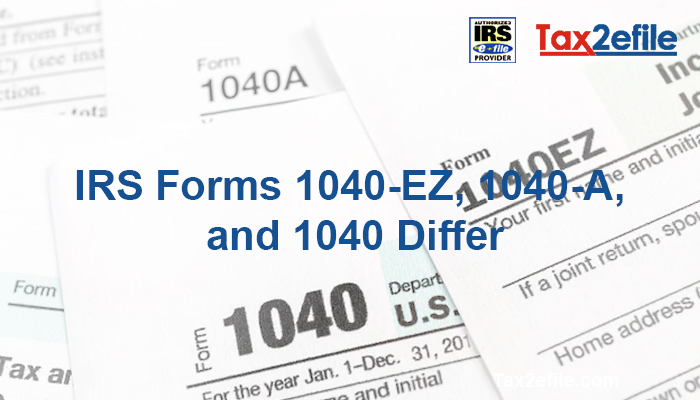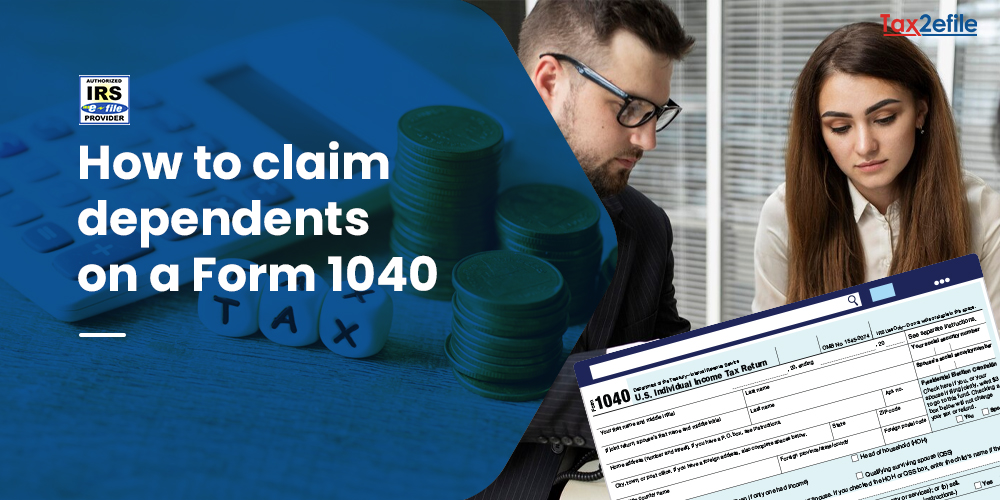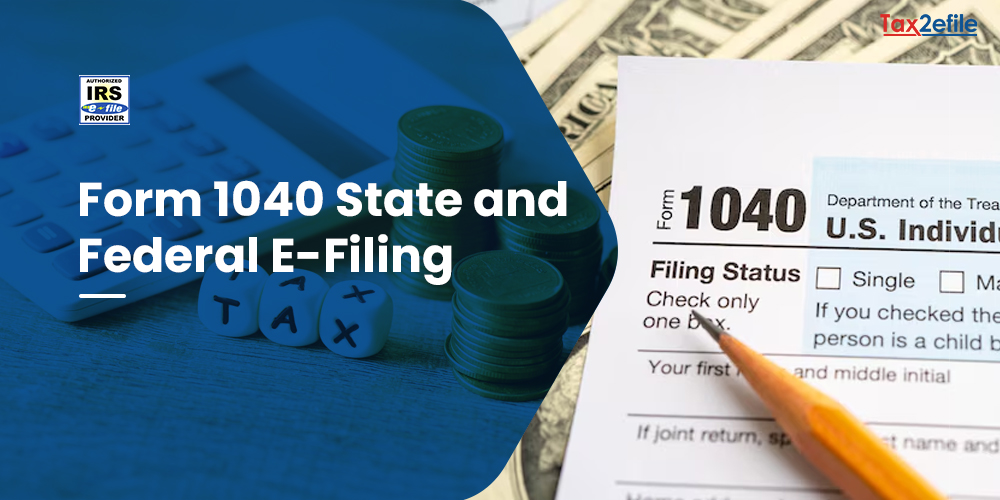- November 4, 2022

The worst nightmare for US taxpayers is figuring out which form to use to file their returns. The taxpayers who are required to file an individual income tax return should make use of Form 1040, for reporting internal revenue service tax or use its other versions such as Form 1040-EZ and Form 1040-A. There are clear differences between these three Forms and IRS 1040 form is considered long and complex to fill compared to the other two. Nevertheless, the purpose of each of these tax forms is to report one’s income, apply for tax exemptions, determine if one owes additional taxes, and seek tax refunds.
Differences between IRS Forms 1040, 1040A, and 1040 EZ
Taxpayers who are filing their returns on paper should make use of the simplest form that they qualify for. This helps in avoiding errors and keeping the processing time short. The simplest of the three forms is 1040-EZ and the 1040-A covers additional items that are not addressed by the EZ.
1. Form 1040:
This is a general tax form used by taxpayers to report their revenue and tax returns. Employed citizens use Form 1040 to report their income and itemize their deductions. Those who owe employment tax or have $100,000 or more in taxable income must file 1040 form, as stated by the IRS.
2. Form 1040-A:
This is a shorter version of Form 1040 and it allows the taxpayers to claim certain adjustments that are not available on Form 1040EZ. Form 1040-A can be used to file as the head of the house, which can be more advantageous than filing as a single. While reporting tax returns through this Form, it is possible to claim dependents, take tax credits for the child, report retirement savings, earned income, expenses on education, etc.
Taxpayers can use this Form if their taxable income is less than $100,000 and allows taxpayers to allow other sources of income such as dividends, pensions, annuities, capital gains, etc. Form 1040-EZ has a limit on interest income, up to $1500, but this doesn’t apply to Form 1040A. But it cannot be used to itemize the deductions and adapt to only standard deductions.
3. Form1040-EZ:
It is the easiest federal income tax Form but is tied by several restrictions and conditions on its use. The conditions that qualify the taxpayer to use 1040-EZ are,
The status of the taxpayer should be single or married (filing jointly)
Taxable income is $100,000 or less and comes from wages, salary, interest income, fellowship grants, interests less than $1500, etc.
File Form 1040-EX, if boxes 5 and 7 or W-2 has tips earned
You are filing on the last day of the tax year and are under age 65 and not blind
Premium tax credits were not paid on your behalf or on behalf of your spouse.
Unless these conditions are satisfied, the taxpayer cannot use 1040 Form EZ. In this Form, they cannot claim dependents, itemized deductions, and tax credits other than the earned income tax credit. The taxpayer cannot claim adjustments to income, such as contributions to the IRA cannot be claimed through 1040-EZ. If the taxpayer wants to claim dependents, adjustments, credits, and deductions, then it is better to use Form 1040 or 1040A.


